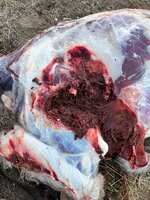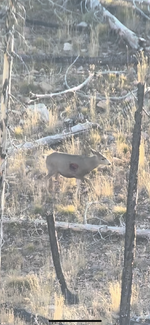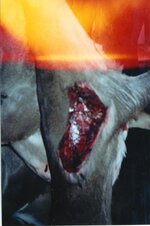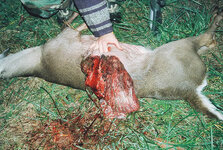Thank you form, that clarifies. So the change from 1” to 1.5” wound is mainly a function of velocity. I think that means that in a traditional mono you would advocate for the fastest bullet on impact, regardless of caliber or bullet weight then, because a 1.5” wound will incapacitate faster (bigger hole) than the slower bullet. Is that correct?
@huntnful did the substantial wound hit any bone? Ive used ttsx more than any other mono, and found pretty consistent 1.5”ish exits (Im mainly a short to mid range guy), except its always way more damaging if it hits even a rib or thin scapula on the way in. Seems the bone shards do the same thing to tissue as lead fragments. I expect that 300winmag was only moving about 2300fps at 400 yards so would not expect a large wound unless bone was in play.
@huntnful did the substantial wound hit any bone? Ive used ttsx more than any other mono, and found pretty consistent 1.5”ish exits (Im mainly a short to mid range guy), except its always way more damaging if it hits even a rib or thin scapula on the way in. Seems the bone shards do the same thing to tissue as lead fragments. I expect that 300winmag was only moving about 2300fps at 400 yards so would not expect a large wound unless bone was in play.
Last edited:




